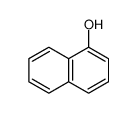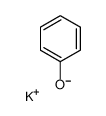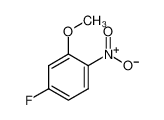

-
Potassium methoxide
CAS No.865-33-8
Formula:CH3KO
Formula
CH3KO
Molecular Weight
70.1322
Exact Mass
69.9821
LogP
0.0467
PSA
23.06
Synonyms
potassium,methanolate
expand collapse
Appearance & Physical State
solid
Density
0.85
Boiling Point
48.1ºC at 760 mmHg
Melting Point
-20ºC
Flash Point
7ºC
Refractive Index
n20/D 1.37
Water Solubility
may decompose
Stability
Stable. Reacts violently with water. Moisture sensitive. Absorbs carbon dioxide from the air. Incompatible with acids, strong oxidizing agents, acid chlorides, acid anhydrides, alkali metals.
Storage Condition
Flammables area
Safety Statements
S16-S25-S29-S33-S36/37/39-S45-S46-S62
WGK Germany
1
Risk Statements
R11; R23/24/25; R38; R39/23/24/25; R48/20; R63; R65; R67
HS Code
29051900
RIDADR
UN 3206
Hazard Class
4.2
Packing Group
II
Caution Statement
P210; P260; P280; P301 + P310; P305 + P351 + P338; P310
Hazard Declaration
Caution Statement
Related Compound Information
Copyright © 2015 MOLBASE All Rights Reserved.
ICP Shanghai 14014220











